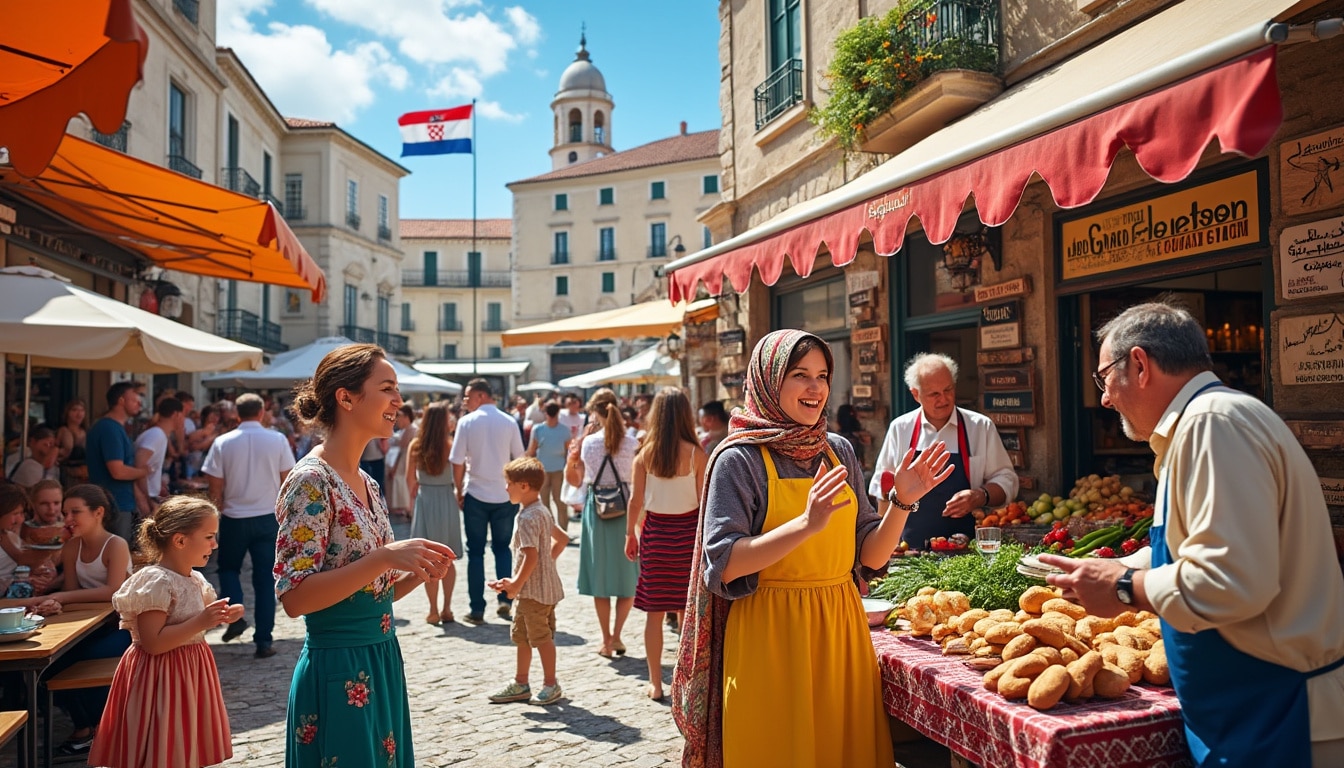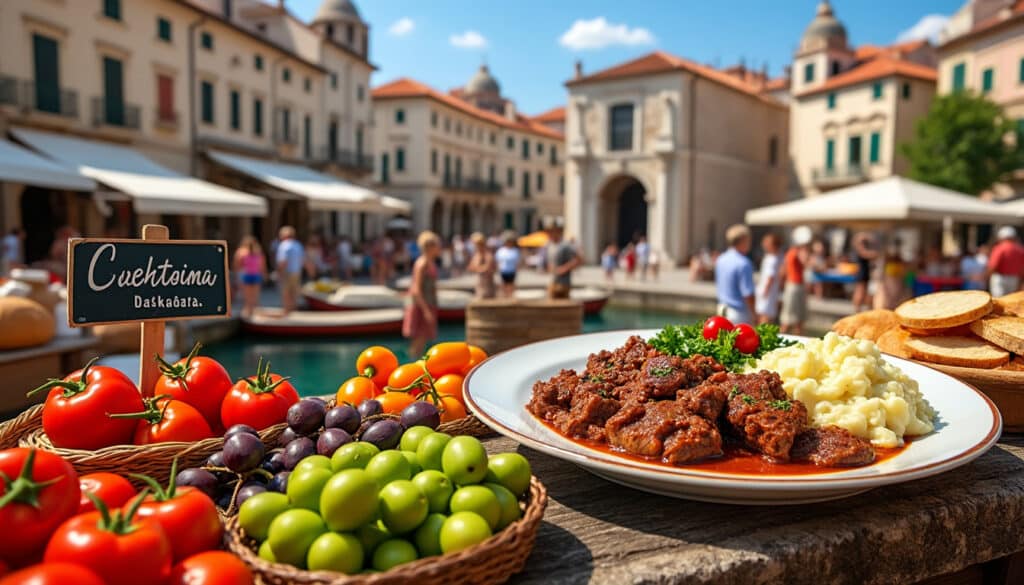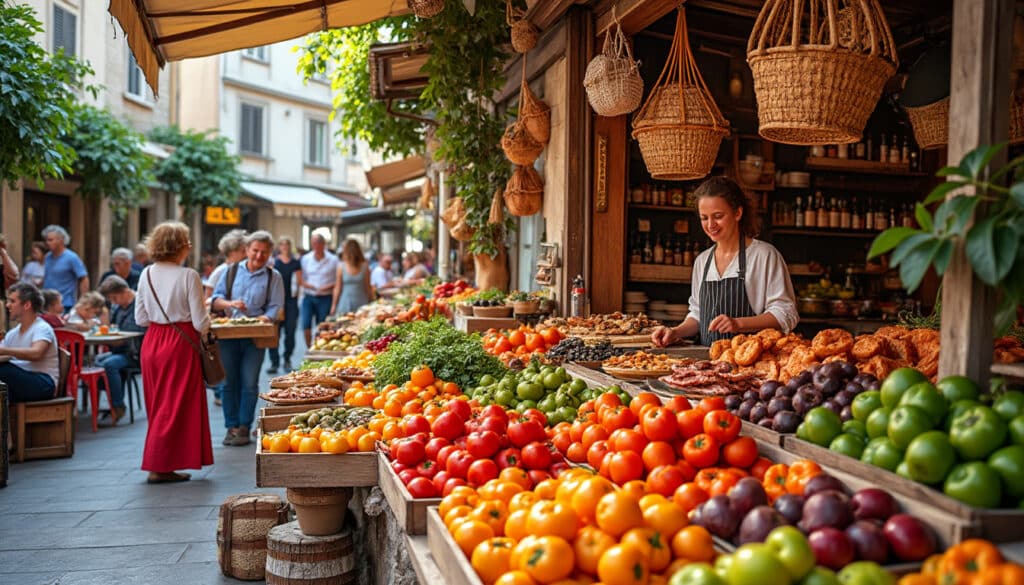Split, a picturesque city nestled along the Adriatic coast, is a melting pot of languages and cultures. The linguistic landscape in Split is as dynamic and diverse as the city itself, characterized by the rich historical tapestry of the region. From Croatian, the official language, to the presence of various minority languages, Split offers a kaleidoscope of linguistic experiences.
Understanding the languages spoken in Split provides a window into the city’s vibrant culture and history. From the ancient Roman influences to contemporary multicultural interactions, Split embodies the spirit of a city where history meets modernity. Here, we explore the primary and secondary languages, their historical evolution, and their roles in everyday life.
Croatian Language in Split: The Heartbeat of Communication
The predominant language spoken in Split is Croatian, a South Slavic language written in the Latin alphabet. Croatian, known locally as “Hrvatski,” is deeply rooted in the cultural and historical milieu of the region. With a population of nearly 4 million people in Croatia, about 90% speak Croatian as their first language. It holds a special place not only in official settings but also as a gateway to understanding Croatian traditions and heritage.
Croatian is characterized by three major dialects: Čakavian, Kajkavian, and Štokavian, with Štokavian forming the basis of the standard language. In Split, you will primarily encounter the Čakavian dialect, which bears its own unique melodic tone, blending seamlessly with the sounds of the Dalmatian Coast.
Historically, Croatian replaced Latin as the official language of the region in the 19th century, a significant cultural shift led by the visionary Ivan Kukuljević Sakcinski. This transition marked a monumental step in national identity, allowing the Croatian language to flourish in literature, politics, and education.
- 🌟 Croatian is the official language in Split and is widely spoken by over 90% of the population.
- 🥇 The language boasts three major dialects with Štokavian as the standard base.
- 📜 Croatian replaced Latin in the 19th century as the official language, cementing its place in history.
For those interested in immersive language learning, platforms like Duolingo and Rosetta Stone provide resources to understand and interact with Croatian. Additionally, tools like Pimsleur and Babbel offer conversational courses, beneficial for visitors striving to grasp the basics.
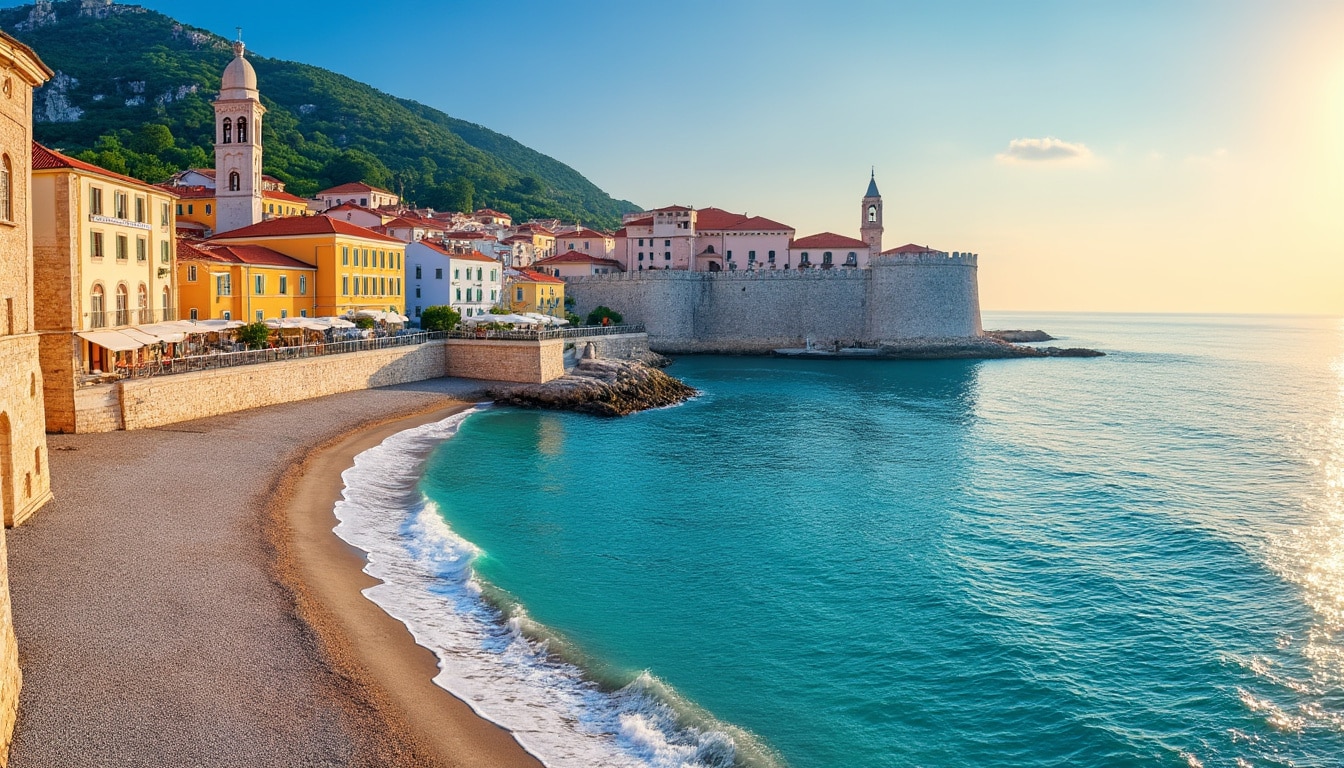
Dialectical Diversity and Regional Variants in Split
The Croatian language showcases an incredible range of dialectical diversity. This diversity is not only a testament to the cultural richness of Croatia but also adds a vibrant tapestry to everyday communications in Split. People from various regions might speak in ways that sound distinctly different due to unique pronunciations and vocabulary.
For instance, the Čakavian dialect, predominant in the coastal areas, has certain phonetic characteristics and vocabulary that distinguish it from the kajkavian, often found in the northwestern part of Croatia. This dialect adds a local charm and heritage to the language of Split, promoting a unique regional identity that tourists often find intriguing.
The Influence of English and Other Foreign Languages in Split
English has become a prominent secondary language in Split, primarily due to its appeal to international tourists and the young Croatian generation’s inclination towards global communication. In tourist areas, English signs, menus, and multilingual information are common, facilitating easy navigation and exploration for visitors.
This prevalence is a result of Croatia’s strong emphasis on language education; English is introduced early in schools, often as a secondary language. Many young locals, especially those in the hospitality sector, are proficient in English, enhancing their engagement with international tourists.
- 💬 English is widely spoken in Split, especially in tourist-heavy areas and among the younger population.
- 📈 The tourism boom has increased English language proficiency and its practical use in everyday situations.
- 🛍️ English signage and menus are frequently used in tourist spots for easy accessibility.
Language learning apps like Busuu, Memrise, and Lingoda offer valuable English resources, facilitating language acquisition for both locals and tourists who wish to converse in English.
Interaction of Language and Culture in Split
The fusion of language and culture in Split creates an inviting atmosphere where language acts as a pivotal medium of cultural exchange. With historical influences from the Roman Empire to the Austro-Hungarian period, Split has seen a tapestry of linguistic evolution.
As English continues to cement itself as a global lingua franca, visitors find it easy to communicate with locals who often switch effortlessly between Croatian and English. This multilingual capability enriches cultural exchanges, making Split a vibrant hub of diverse interactions.
Other Languages in Split: A Kaleidoscope of Voices
Beyond Croatian and English, Split is home to several minority languages, reflecting the diverse heritage and demographics of the area. These include Serbian, Bosnian, Italian, Hungarian, and German. Each of these languages provides a facet to the multicultural identity of the city, contributing to its uniqueness.
Serbian and Bosnian, closely related to Croatian, are spoken by ethnic minorities and contribute to the shared linguistic heritage of the region. Italian and German, once associated with historical influences, continue to be spoken by small communities and expatriates.
- 🌍 Split hosts a blend of minority languages, enriching its cultural landscape.
- 🗣️ Languages like Serbian and Bosnian are part of the city’s shared linguistic heritage.
- ✨ Small communities continue to use Italian and German, adding to Split’s diversity.
For those eager to delve deeper into these languages, platforms like iTalki and FluentU provide great opportunities to converse with native speakers, offering an immersive language learning experience.
Multilingualism and Its Impact on Daily Life in Split
The multilingual environment of Split contributes significantly to its cultural richness. Residents often possess a remarkable ability to navigate through various languages, a skill that enhances their connectivity to the world beyond and facilitates smoother interpersonal relationships.
With the city’s burgeoning tourism industry, the blend of languages ensures that both locals and visitors benefit mutually from diverse interactions, making everyday transactions and social interactions seamless.
Learning Croatian: Your Gateway to Local Insights
Embarking on learning Croatian can be immensely rewarding for tourists and residents alike. Diving into the local language offers unique insights into Split’s culture and day-to-day life. It’s not just about communication; it’s about immersing oneself in the depth of the local experience.
For those keen on learning Croatian, there are numerous language courses and resources available. Institutes in Split offer structured courses, while language apps like Tandem empower learners by connecting them with native speakers, offering real-time learning experiences.
- 🚀 Learning Croatian opens doors to deeper cultural interactions and understanding.
- 🎨 Language courses and apps provide structured and flexible learning avenues.
- 🌐 Tandem facilitates real-world communication with native speakers, enhancing practical learning.
This journey, though challenging, is facilitated by a myriad of resources, including online platforms and local language cafes, offering both structured and informal learning environments.
The Challenges of Mastering Croatian
Croatian, like any language, presents its challenges, especially for those unfamiliar with Slavic languages. With its distinctive phonetics and grammatical structures, mastering Croatian requires dedication and patience.
However, these linguistic complexities also offer enriching challenges that deepen one’s understanding of the culture and history intertwined with the language. Through dedication and appropriate resources, achieving proficiency in Croatian becomes a rewarding venture.
FAQs About Languages in Split
For those curious about the linguistic landscape of Split, finding answers to specific questions can often illuminate the cultural richness of this city.
- Is English commonly spoken in Split? Yes, especially in areas frequented by tourists and among the younger population.
- What other languages are spoken in Split? Besides Croatian and English, languages like Serbian, Bosnian, Italian, and German are also present.
- How important is it to learn Croatian when visiting Split? While not essential for short visits, learning basic Croatian phrases can greatly enhance your interaction and cultural experience.
- Are there resources for learning Croatian in Split? Yes, various language schools and online platforms offer Croatian language learning resources.
- What role does language play in Split’s tourism industry? Language facilitates communication and engagement, enhancing the tourist experience and contributing to the industry’s growth.
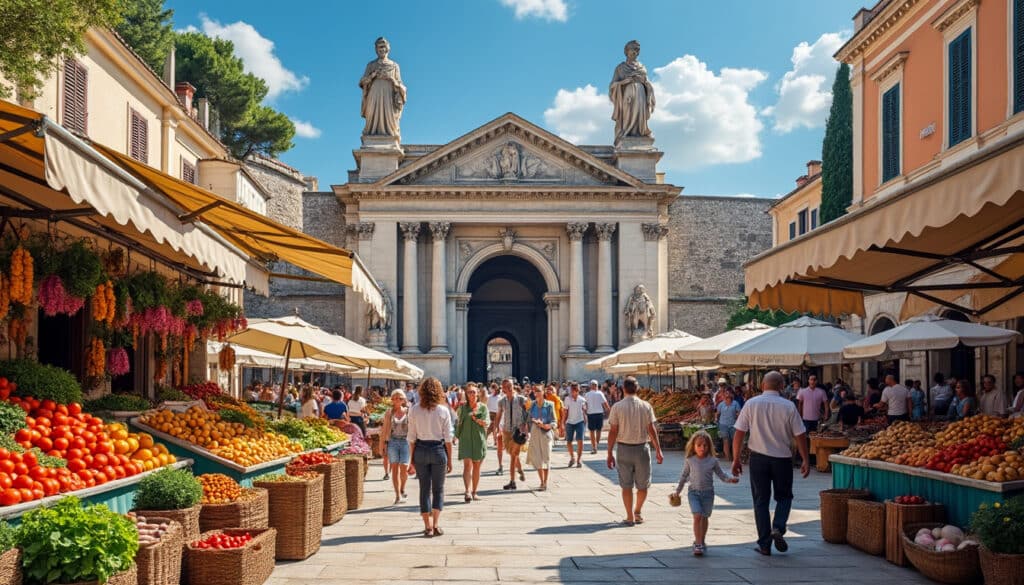
On the Dalmatian coast, the ancient city of Split stands as a testament to the harmonious blend of history, culture, and contemporary life. With streets paved centuries ago, meandering through narrow passages leading to sunlit plazas and ancient towers, Split…
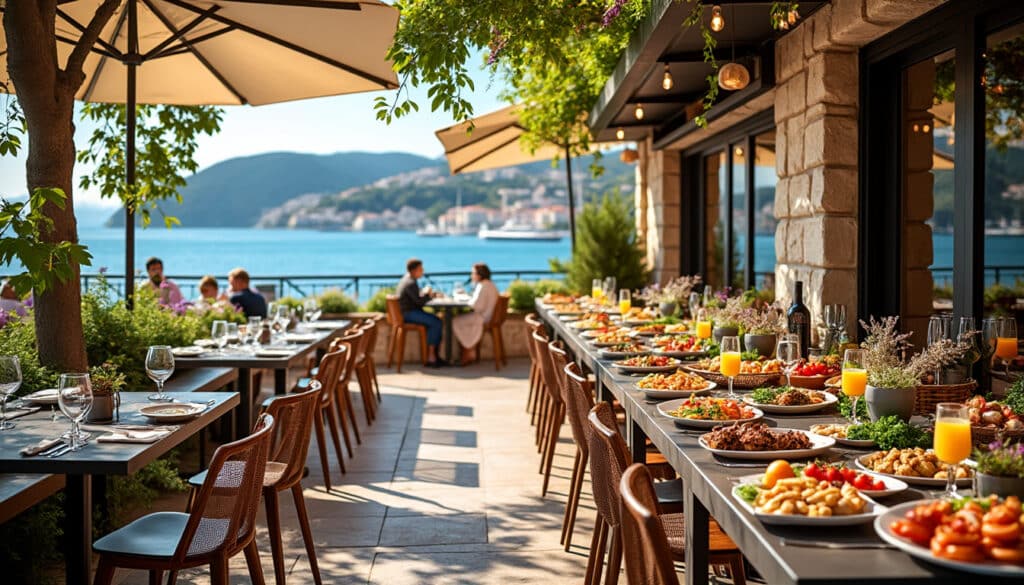
In the radiant heart of Split, where ancient history meets vibrant local life, the culinary scene offers a delectable tapestry of both traditional and contemporary flavors. From quaint konobas to avant-garde eateries, dining in Split is an experience that captures…

In the vibrant streets of Split, Croatia, meal times are more than just moments to satisfy hunger; they are cherished occasions that intertwine the city’s rich history and diverse cultural influences. This coastal gem, nestled along the Adriatic Sea, boasts…
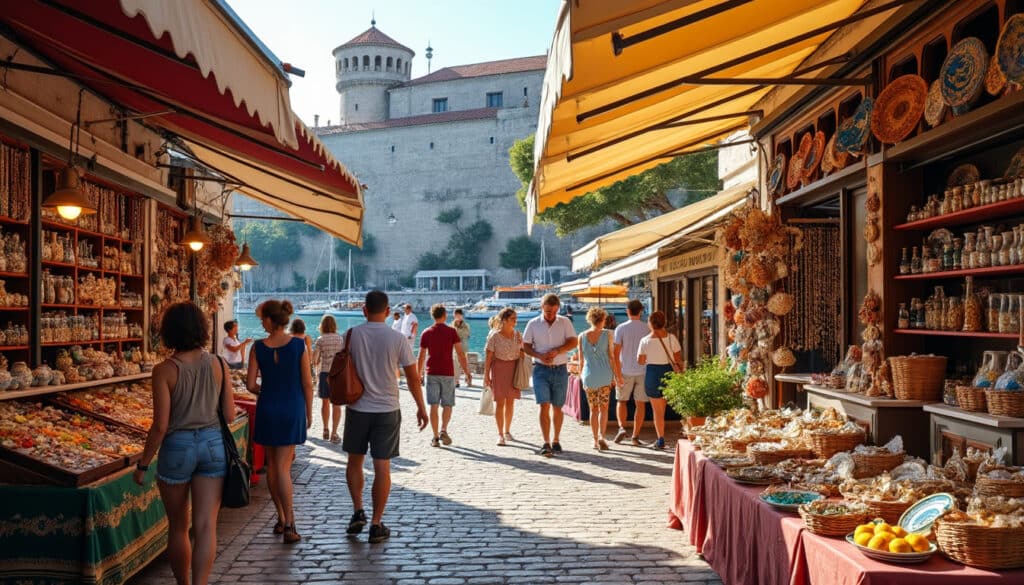
Souvenirs and shopping in Split
Shopping in Split is an enticing blend of tradition and modernity, where the past and present harmoniously coexist to offer a variety of experiences for locals and tourists alike. Split, Croatia’s bustling coastal city, is not just about its stunning…

